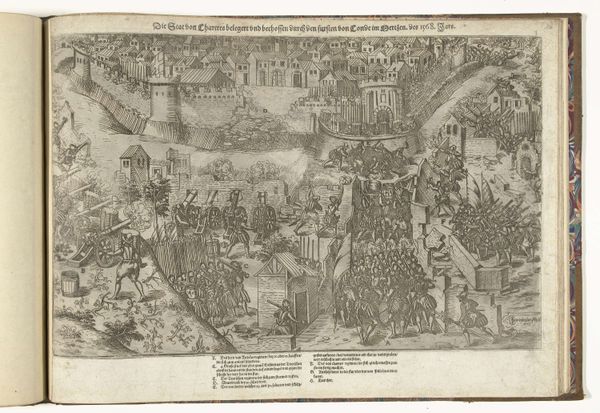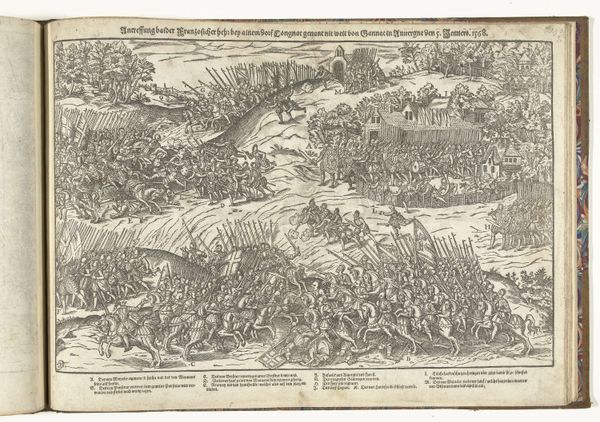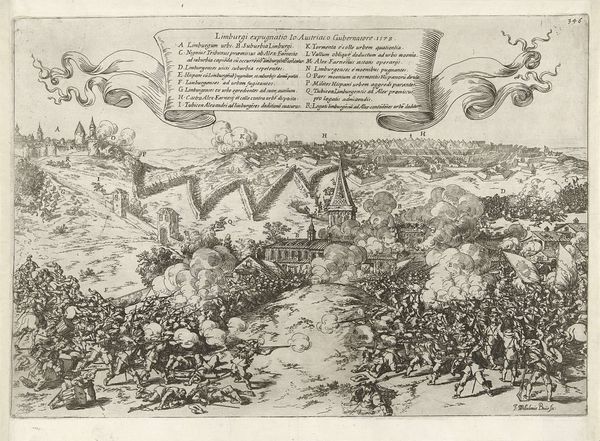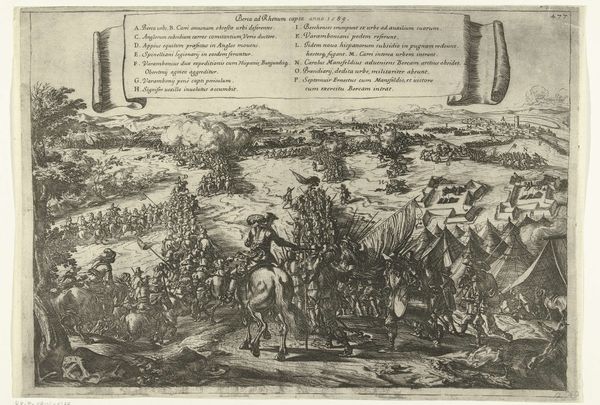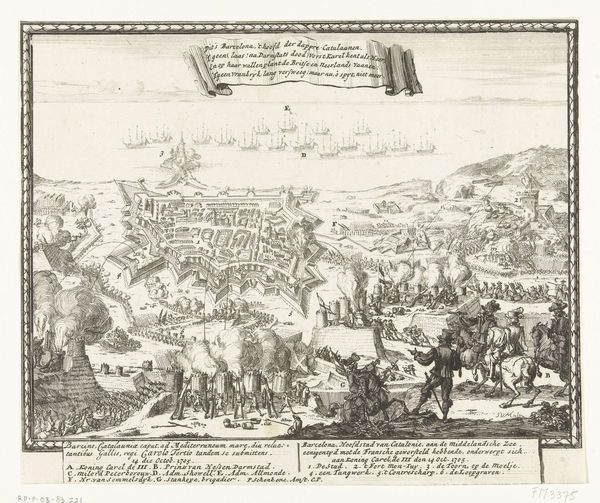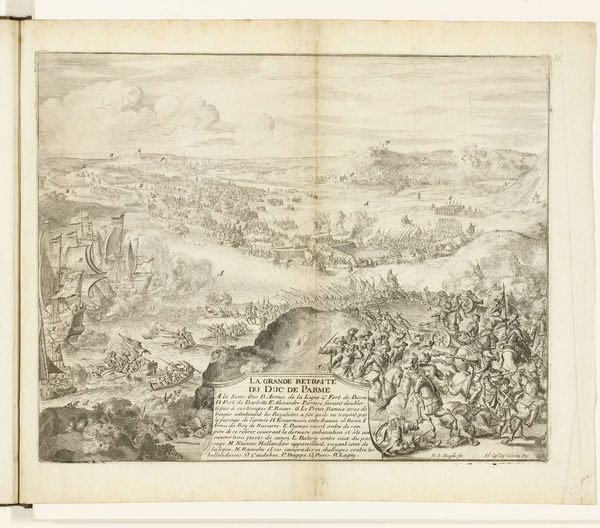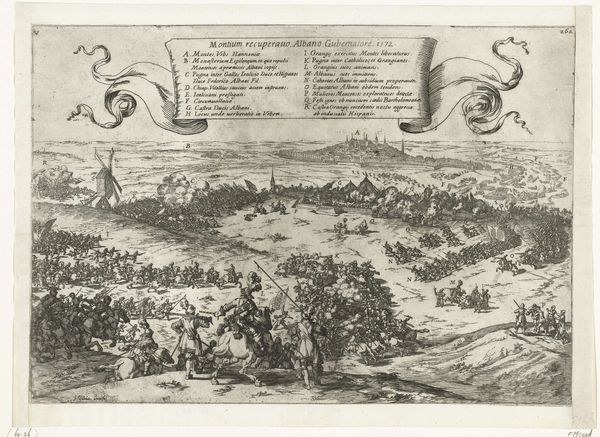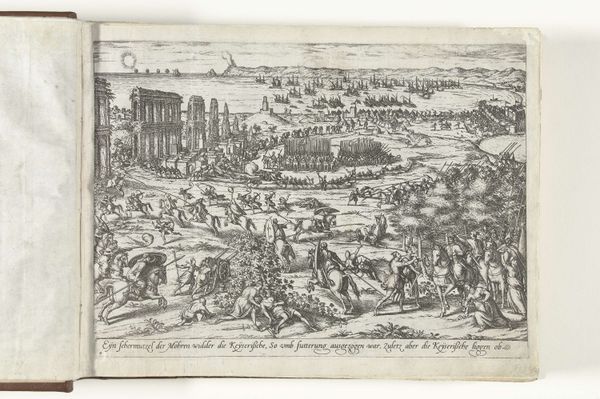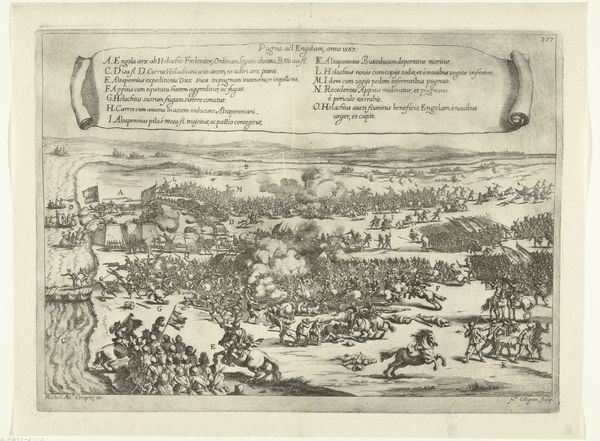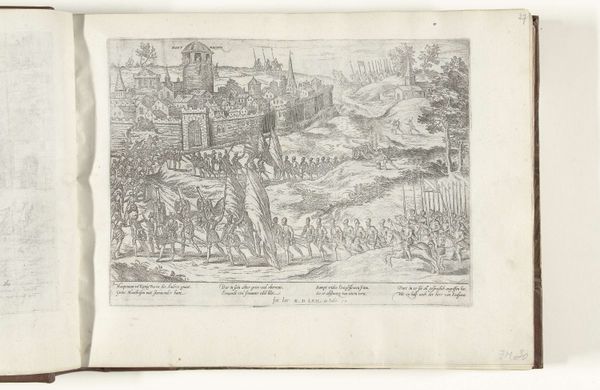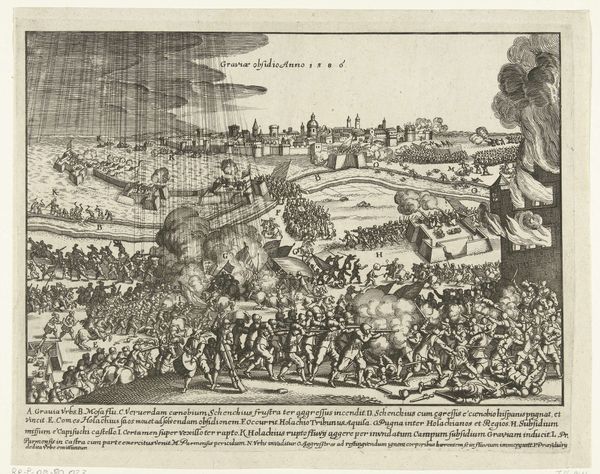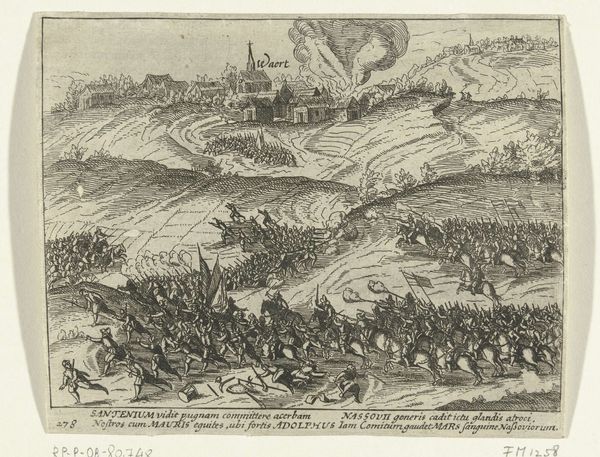
print, paper, pen, engraving
# print
#
landscape
#
mannerism
#
paper
#
coloured pencil
#
pen-ink sketch
#
pen
#
cityscape
#
history-painting
#
engraving
Dimensions: height 368 mm, width 483 mm
Copyright: Rijks Museum: Open Domain
Curator: Look at this remarkable print, "Aanslag van de hugenoten op Bourges verijdeld, 1569," created around 1570 by Jean Perrissin. The scene is rendered in engraving, offering us a birds-eye view of a pivotal historical moment. Editor: My goodness, what a busy composition! It's almost overwhelming at first glance. So many tiny figures engaged in...mayhem? But there's something so beautifully chaotic about it. Curator: Indeed, Perrissin captures the foiled Huguenot attack on Bourges with incredible detail. You see the city's defenses, the landscape teeming with soldiers, all rendered with such precision using pen and ink on paper. Editor: Yes, the sheer density of lines, the meticulous detail – it gives the print a striking sense of texture and movement. It's fascinating how the artist uses contrasting patterns of light and shadow to direct your eye. It has echoes of mannerism somehow. Curator: You nailed it with that mannerist link! Note how Perrissin distorted perspective and proportion for dramatic effect. It certainly amplifies the feeling of turmoil and highlights key action points. Also the choice of a bird’s eye view amplifies that drama by flattening the composition and emphasizing a sense of overview. Editor: Right, it's not aiming for a realistic portrayal; rather, it's constructing a powerful narrative through formal means. One begins to decipher distinct clusters of meaning. I'm drawn to how Perrissin uses the landscape itself to almost echo the battle – those hills and dips mirror the ebb and flow of the conflict. It reminds me, paradoxically, of Breugel’s work. Curator: That is indeed a lovely observation. What is fascinating for me is trying to interpret and narrativize such moment. Consider, what does "foiled" really mean? Whose version of history are we viewing? The scene offers no easy answers; it's up to us to wrestle with its implications. Editor: Absolutely. Prints like this become more than just historical records; they're actively shaping perceptions, reminding us how art becomes intertwined with the stories we tell ourselves about the past. It's been quite an enlightenment Curator: For sure, each examination peels away another thin veneer until, eventually, a story—a message, some sense of history — emerges.
Comments
No comments
Be the first to comment and join the conversation on the ultimate creative platform.
